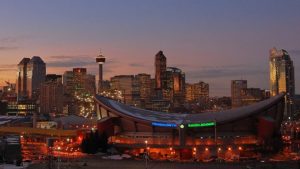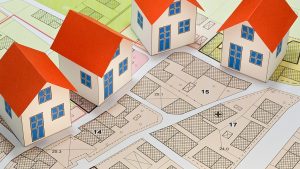The construction industry in B.C. and the U.S. is starting to reject the LEED certification process citing it as too costly and taking too long with too many uncertainties.
The construction industry in B.C. and the U.S. is starting to reject the LEED certification process citing it as too costly and taking too long with too many uncertainties.
“You can wait up to two years to get certified, the backlog is extraordinary,” said Helen Goodland, principal of Brantwood Consulting, a green building consultant.
The firm is heading a stakeholders group seeking to find alternatives to achieving energy efficient buildings and reducing B.C.’s greenhouse gas emissions by 33 per cent by 2020.
“The industry is quite reasonably rejecting LEED,” she said.
Goodland cited figures for Vancouver, where only 13 per cent of the structures built to a LEED standard are currently certified.
The LEED backlog, cost, and uncertainly have created their own problems, such as structures claiming to be built to a LEED standard or LEED shadowed, but not registering or seeking certification.
“There is not much that the Canada Green Building Council (CaGBC) can do about developers, who claim they are building to a LEED standard,” admitted Mark Hutchinson, director of green building programs with the council.
“It is not something that we can control.”
However, the organization discourages the use of the LEED name in these cases.
LEED is a process that documents the design and assembly of a green building and offers third party verification of its sustainability.
“When they say they are building to a LEED standard, you don’t know what that means,” he explained, adding there is no accountability or verification.
He said such a building might only have elements that could have earned a couple of points out of 100. Basic certification requires at least 50.
However, construction lawyer Marina Pratchett, of Fasken Martineau, said using the term ‘built to a LEED standard’ might simply reflect the standard an owner desires.
“They may want to go after energy efficiency, but not all the other bells and whistles,” she said.
Architect Roger Bayley sees another difficulty.
As an architect, he encourages developers to build green.
However, if the term “built to a LEED standard” has the same market cachet with the condo buyers as a LEED certified structure, it becomes difficult to justify the expense.
Even so, taking a LEED building seeking certification to market can be tricky, as a developer might find he can’t deliver on the promise.
The Olympic Village is an example, said Bayley.
The structures were built to LEED Gold standards and marketed, with some nervousness, before certification.
To ensure success, the City of Vancouver asked for features that would generate extra points, over the required minimum.
Potential legal problems can arise if certification claims aren’t substantiated.
Ashley Katz, media relations with the U.S. Green Building Council (USGBC). acknowledged that there are some issues in the U.S. too.
Some developers are using the name, but not seeking certification.
“Being built to LEED isn’t the same as earning LEED certification,” she said in an email.
Katz added that overzealous marketers can use terms incorrectly. Complaints are turned over to the USGBC’s legal department.
In December, U.S. President Barack Obama signed legislation preventing the use of U.S. Department of Defense funds for garnering LEED Gold or Platinum certification except under certain circumstances.
Also, states such as California are creating their own guidelines for green building rather than just relying on LEED standards.
Green building systems’ shortcomings were recently pointed out in a paper prepared by the B.C. Construction Association: A Study in the Risks and Liabilities of Green Building.
It points to the pitfalls of third party verification systems. It also highlights the impact of written agreements on contractors and subcontractors, over aspects of the work, where they have no control.
“The responsibility of achieving credit across all aspects of a project (design, material selection and installation) means that no one party can control all the aspects in achieving certification,” said the report.
“There is no way for designers and builders to guarantee whether a building, even designed and built to necessary specifications, will attain certification or not.”
The difficulty with the LEED process, said Bayley, is it was never a compliance program, but rather it is a roadmap to a green building.
A number of municipalities are now looking at putting green building practices into the building code, rather than relying on a specific rating system.
The University of B.C. has developed it’s own sustainable building guidelines.
Bailey pointed to ASHRAE 189.1, a standard for measuring sustainability for those striving to design, build and operate green buildings.
Inspections would fall to the municipality.
Yet, Goodland is not convinced that ASHRAE works.
“The province has said it wants to be carbon neutral by 2020. Using LEED, there is no hope and ASHRAE is not even defining carbon neutrality,” she said.
Goodland has formed a committee that includes the City of Vancouver and the Urban Design Institute. They are looking to develop a framework for energy efficiency and carbon reduction based on European models.










Recent Comments
comments for this post are closed